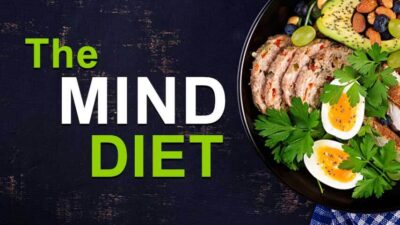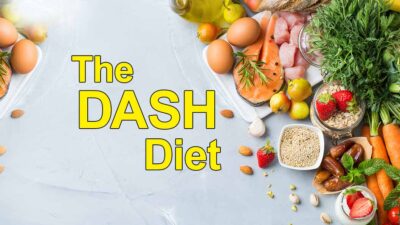The Diet Insiders Score 3.5/5
#9 in Best Diets Overall – Expert Reviews
This article reviews whether The Paleo Diet can help you lose weight.
What is The Paleo Diet?
The Paleo Diet, founded by Dr. Loren Cordain, Ph.D., is an eating regimen that seeks to mimic the diet followed by early humans during the Paleolithic Age. It is based upon the premise that the human body is genetically designed to tolerate the foods that early humans consumed, thus helping the body function at its best and potentially ameliorate and prevent chronic disease.
The diet revolves around the foods that hunter-gatherers consumed during the Paleolithic Era which dates back more than 2 million years ago. It also excludes foods that emerged after the introduction of agriculture 10,000 years ago.
The Paleo Diet mentality is that humans evolved over one million years ago and agriculture was only introduced 10,000 years ago, making our bodies ill-equipped to process farmed foods. It is based upon the “hunter-gatherer” diet approach that humans during this era used to procure food: they hunted and gathered wild foods such as fish, animals, and plants, and consumed them.
Clearly there was naturally a much higher energy expenditure for basic survival during the Paleolithic era – one that is quite different than we experience today, as everything is at our fingertips.
- Short-Term Weight Loss: 4
- Long-term Weight Loss: 3.5
- Easy to Follow: 3
- Healthy & Nutrition Quality: 3.5
THE BOTTOM LINE: The Paleo Diet seeks to include foods early humans consumed during the Paleolithic Era, consisting of fruit, vegetables, lean meats and seafood, nuts, seeds and certain oils, while eliminating foods that evolved after the introduction of agriculture. The premise is that the human body is genetically inclined to tolerate these foods best.
Why is The Paleo Diet so popular?
The Paleo Diet proponents maintain that the genetic makeup of modern-day people is not much changed from early humans during the Paleo Era. Thus, following a similar diet to theirs is best suited for our bodies.
Paleo proponents also maintain that fewer modern-day diseases such as cancer, heart disease, and diabetes were experienced during this era. It is important to remember, however, that our ancestors lived much shorter lives than we do today.
The Paleo Diet, like many eating regimens and diets, has gained popularity due to its potential for weight loss and health benefits.
The Paleo Diet founders believe that the recommended foods are those that are programmed into human DNA. They also claim the diet balances insulin levels, helps prevent chronic disease and stops hunger cravings.
There are countless websites, books, recipe blogs, and food products dedicated to The Paleo Diet around every corner nowadays.
How does The Paleo Diet work?
The Paleo Diet works by basing one’s intake around lean meats, fruits, vegetables, nuts, seeds and certain oils. On the contrary, The Paleo Diet excludes foods that are believed to be inflammatory such as dairy products, legumes, grains, processed foods, refined oils, and added salt.
There is no calorie counting or macronutrient counting on The Paleo Diet. It is worth noting that even healthy whole grains and fiber-rich legumes are not allowed at any time during the diet. They are not reintroduced at a later time.
Although Dr. Cordain founded the original Paleo Diet, it is important to note that there are currently various modifications offered by Paleo proponents across the web and bookshelves that may differ from the original plan.
Each offers different inclusions and exclusions of foods in their diet plans. Some modern-day Paleo plans allow certain grains and tubers, and many contain processed meats such as beef jerky and salami in their meal plans.
Thus, anyone wanting to begin this eating plan may wish to start with the original Paleo plan and then browse different modifications if they need a more liberal plan.
However, straying from the original diet may not offer the purported benefits of following the true Paleo Diet, depending on which foods are added into the plan.
What foods to eat on The Paleo Diet
Although modified Paleo Diets exist, The Paleo Diet generally includes the following foods to eat each day while adhering to the plan:
- Lean meats
- Fish
- Seafood
- Eggs
- Fruit
- Vegetables
- Nuts (no peanuts allowed as they are legumes)
- Seeds
- Oils such as coconut, walnut, macadamia, flaxseed, and olive
What foods to avoid on The Paleo Diet
- All grains, including high-fiber whole grain products (such as Wheat, Rye, Barley, Spelt, Oats)
- Legumes (Beans, Peas, Chickpeas, Lentils, Hummus)
- Potatoes
- Dairy
- Added salt
- Artificial Sweeteners
- Processed Foods
- Refined Vegetable Oils
Pros of Paleo Diet
- Eliminates nutritionally-void processed foods
- High in fruit, vegetables, nuts and seeds which are all associated with decreased risk of chronic disease
- There is no counting calories or macronutrients on the plan
- Aims for a higher dietary potassium to sodium ratio, which many Americans do not get
- Elimination of dairy and added sugars may potentially help the skin of those with acne
- Foods such as fruits and vegetables offer anti-inflammatory and antioxidant benefits
- May promote weight loss in individuals needing to lose excess weight simply due to the restrictive nature of the diet as it eliminates many foods
Cons of Paleo Diet
- It is difficult to know exactly what early humans ate, especially because food availability varied among different geographical regions
- Individuals may find it difficult to adhere to The Paleo Diet long-term due to its restrictive nature
- Eliminates healthy fiber-rich foods such as such as whole grains, legumes, lentils, beans, and peas. These foods are associated with reduced risk of many chronic diseases including certain cancers, diabetes, and heart disease
- Red meat promotes inflammation, and consuming a high intake is associated with chronic illnesses such as cardiovascular disease and certain cancers
- Individuals may consume a high saturated fat intake from animal sources and coconuts. Saturated fat is associated with increased risk of cognitive decline and Alzheimer’s Disease as noted in the MIND Diet[6] where saturated fat is the common denominator in its “Brain Harming” Foods
- High saturated fat and dietary cholesterol consumption is associated with increased levels of cardiovascular disease and high cholesterol
- List of allowed foods is restrictive overall
- Many Paleo aficionados have different or modified versions of the diet making consistency difficult and leaving it up to the dieter to determine which variant works best for them and may get confusing for followers
- Processed meat, which appears in many Paleo meal plans, is associated with increased risk of colorectal cancer
- Several Paleo shakes, bars, and snacks exist today which are all considered processed foods
- Animal fats contain arachidonic acid, a precursor to prostaglandins, which trigger inflammation
- May increase levels of TMAO (Trimethylamine N-oxide) in the body, which is associated with heart disease
- Higher-quality grass-fed meats are expensive
Who should try The Paleo Diet?
Those who are seeking to follow an eating regimen that does not require tracking food or counting calories may wish to try The Paleo Diet.
Also, anyone wanting to lose excess weight may find following the original Paleo Plan helps promote weight loss simply due to its elimination of many foods.
Although not marketed as a low-carbohydrate diet, the Paleo plan removes many (healthy) sources of carbohydrates from the diet. If you’re looking for other low-carb diet plans, you may want to check out the Mayo Clinic Diet, which emphasizes a moderate to low-carbohydrate intake. Click here to learn more about the Mayo Diet review.
Additional considerations regarding The Paleo Diet
While the originator of the diet, Dr. Loren Cordain, maintains that the diet consists of mostly plant-based foods (fruits, vegetables, and some nuts and seeds), virtually all Paleo plans feature animal foods such as meat, fish, and seafood as the diet’s primary protein source.
Given that dairy products are omitted, calcium and vitamin D intake needs to be monitored. Vegans for example generally follow the “greens and beans” mentality to obtain adequate calcium.
However, all beans and legumes are omitted on this diet and are not reintroduced at a later phase like some diet plans.
Also, the human body needs a certain amount of sodium – not an excessive amount that the Standard American Diet (SAD) provides, but this is especially important for avid exercisers and athletes to consider.
It is important to note that foods have likely evolved since the Paleo times, and intake during this era varied depending upon certain geographical regions and food availability.
Furthermore, early humans lived dramatically shorter lives, so it is difficult to tell if they got cancer, diabetes, and other chronic diseases that commonly affect people later in life.
Lastly, many foods are restricted, but it is quite common now to find Paleo protein powders, crisps, protein bars, and snacks such as beef jerky in stores and online retail sources.
Sticking to only the natural foods recommended may pose an adherence problem long-term, but if an individual decides to include these Paleo snacks in the diet, it technically goes against the premise of the diet to eliminate processed foods.
3-Day Sample Paleo Diet Meal Plan
The following recipes have been excerpted from the original “The Paleo Diet” Website[1]. A link has been provided to each recipe.
Day 1
Breakfast: Green Shakshuka
Source: https://thepaleodiet.com/green-shakshuka/
Lunch: Paleo Chicken Pot Pie Soup
Source: https://thepaleodiet.com/paleo-chicken-pot-pie-soup/
Dinner: Lamb Chops with Paleo Pesto Sauce
Source: https://thepaleodiet.com/lamb-chops-with-paleo-pesto-sauce/
Day 2
Breakfast: Paleo Eggs Benedict
Source: https://thepaleodiet.com/paleo-eggs-benedict/
Lunch: Avocado Asparagus Soup
Source: https://thepaleodiet.com/avocado-asparagus-soup/
Dinner: Herb Crusted Pork Chops
Source: https://thepaleodiet.com/herb-crusted-pork-chops/
Day 3
Breakfast: Paleo Start Up Breakfast
Source: https://thepaleodiet.com/paleo-start-breakfast/
Lunch: Creamy Chicken Skillet
Source: https://thepaleodiet.com/creamy-chicken-skillet/
Dinner: Beef Tenderloin with Roasted Cauliflower-Pomegranate Salad
Source: https://thepaleodiet.com/recipe-beef-tenderloin-with-roasted-cauliflower-pomegranate-salad/
Additional Paleo Snacks
Here are a few Paleo Snacks that you can enjoy as part of the diet. One can add these to the meal plans above in between meals.
-One apple with a handful of almonds
-Two cups of fresh berries with a handful of walnuts
-Sliced tomatoes and avocado with olive oil or walnut oil
-Bowl of fruit
-Sliced meat with chopped vegetables drizzled with olive oil
Summary
In summary, The Paleo Diet seeks to fuel the human body with foods available during the Paleolithic Era based upon the idea that the human body is designed to eat this way.
There are components to the diet that contribute to a healthier weight and overall health such as including ample amounts of fruits and vegetables into the diet.
However, removing healthy, fiber- and nutrient-rich foods that have been shown to prevent chronic diseases such as legumes and whole grains are not nutritionally advised for a long-term diet regimen.
Always consult your physician before embarking on any new diet regimen.
FAQ (Frequently Asked Questions) about The Paleo Diet
Ask Question
x
Have a Question? Please Tell Us What We Are Missing Here!
Have a Question? Please Tell Us What We Are Missing Here!
Will Paleo Diet help you lose weight?
Given that The Paleo Diet eliminates many foods – some of which, like sugary and salty processed foods, can be high in calories and low in nutrients, it may help people lose excess weight.
There is no calorie counting or macronutrient counting on The Paleo Diet. Many carbohydrates, however, even healthy fiber-rich carbohydrates, are restricted – leaving the potential for weight loss simply due to excluding many foods.
How much should you exercise on Paleo Diet?
The Paleo Diet does not include specific exercise recommendations like The Mayo Clinic Diet[3].
Remember that hunter-gatherer ancestors obtained a significant amount of physical exercise in their daily lives of procuring food. Any healthy lifestyle should include physical activity of some kind.
All physical activity initiation should be cleared by a physician. Athletic individuals and those who vigorously exercise may find their energy and performance are affected as many healthy carbohydrate sources are limited in this diet.
How can I make my restaurant meal Paleo?
One can make their restaurant dish Paleo by ordering a main dish based on meat or fish and then ordering vegetables on the side, instead of rice or pasta. Ask for the dish to be made with olive oil and not butter or margarine.







 This article changed my life!
This article changed my life! This article was informative.
This article was informative. I have a medical question.
I have a medical question.
 This article contains incorrect information.
This article contains incorrect information. This article doesn’t have the information I’m looking for.
This article doesn’t have the information I’m looking for.